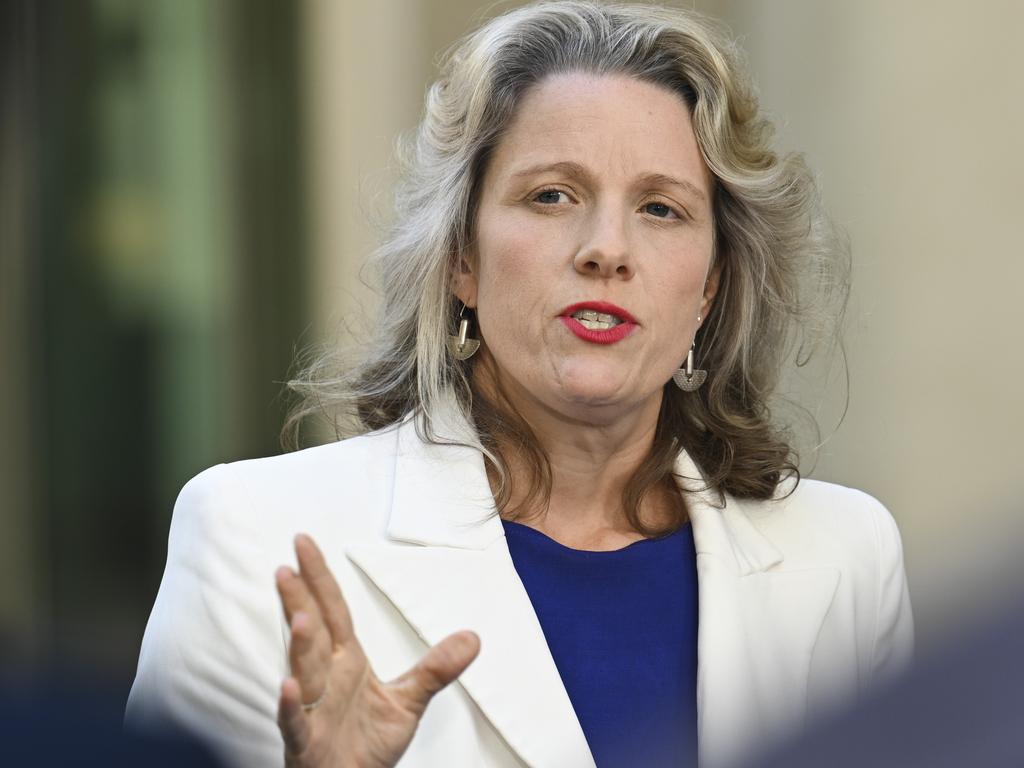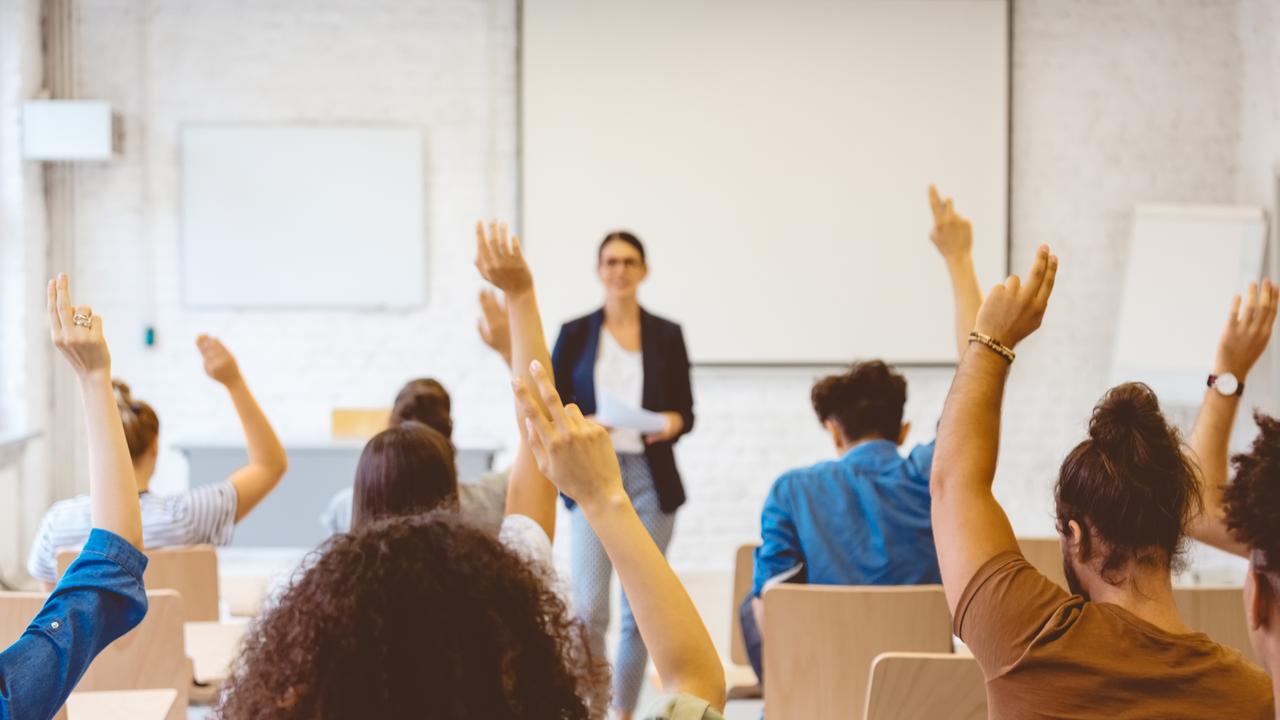100,000 Chinese enrolments defy Labor’s migration crackdown, fuel Go8 international student boom
Overseas enrolments at Australia’s universities have surged above pre-Covid numbers, fuelled by 100,000 Chinese students who are almost exclusively becoming the domain of the Group of Eight.

Overseas enrolments at Australia’s universities have surged above pre-Covid numbers and are up 17 per cent from last year, fuelled by 100,000 Chinese students who are almost exclusively becoming the domain of the Group of Eight.
Despite the Albanese government’s crackdown on student visas and attempts to halve migration, a record 160,000 international students enrolled at Go8 universities in February — an increase of 32 per cent from pre-Covid levels.
As the Coalition vows to pursue steeper cuts than Labor and target major universities in Sydney and Melbourne, it can be revealed that overseas enrolments at non-Go8 institutions were just 8 per cent above February 2019 levels.
There was also 80 per cent more Indian students at Go8 unis, with 12,700 enrolments.
Eighty-six per cent of new Chinese students were enrolled at a Go8 university, with the numbers 15 per cent higher than last year and 31 per cent above 2019 levels.
This is compared to Chinese enrolments halving from their pre-Covid levels outside the eight most prestigious universities.
The Coalition seized on the data to claim the government had made a “mess of immigration in pursuit of its big Australia policy”.
“Record numbers of students have arrived under Anthony Albanese while Australians struggle with a housing crisis,” opposition immigration spokesman Dan Tehan said.
The explosion in Chinese students at the Go8 universities of Melbourne, Sydney, Queensland, Western Australia, Adelaide, Monash, NSW and Australian National University comes as analysis by The Australian found Labor’s clampdown on international students failed to curb large numbers of foreigners from studying here.
Data provided by 19 universities in metropolitan and regional areas shows just two – the University of Sydney and Federation University Australia – saw their percentage of international students decline over the year.
Fifteen boasted a higher proportion of overseas students in the first semester of this year compared to semester one last year.
In a sign the government’s plans to cut migration to 260,000 next financial year will be made even harder, several big universities like USyd and Melbourne have taken in more new international students in the first semester of this year than last year.
Go8 chief executive Vicki Thomson said the growth in post-Covid numbers reflected many things, including the release of pent up demand. “More importantly, it reflects the fact that Australia is a quality destination market,” she said.
International students now make up 47 per cent of the University of Sydney’s student body – a figure repeatedly referenced by the Coalition in arguing for fewer migrants – compared to 49 per cent in semester one last year.
The number of new international students commencing studies at the sandstone university increased from 9100 in first semester of 2023 to 11,000 in first semester this year.
The proportion of students from overseas at Federation University Australia has fallen from 33 per cent to 30 per cent, with new commencements dropping significantly from 1294 to 384.
The largest increases between first semester last year and this year occurred at Deakin University and University of Western Australia (up seven percentage points each) and Charles Darwin University (up nine percentage points).
At Bond University and the University of Queensland, the proportion of international students in first semester this year compared to the same time last year remained steady at 30 per cent and 38 per cent respectively.
A University of Sydney spokeswoman noted China’s borders opened in early 2023, increasing demand, and there was a small number of postgraduate programs that were very popular with international students.
“For the past 20 years, both sides of politics have encouraged universities to grow their international student cohort, recognising the great benefits they bring to our education, research and development, and soft diplomacy with future leaders remaining friends of Australia and the region once they return home,” she said.
“We are looking to manage any growth but we do need a measured approach and to make sure our international students still feel welcomed here.”
The government doubled down on its bid to reduce international students numbers in last week’s budget, announcing it would pass legislation to give it unprecedented powers to cap the number of international students at individual educations, and in individual courses.
Government sources noted its reforms to international education didn’t apply just to universities but also to vocational education and training providers, which receive a significant number of international students.
Legislation to target VET was introduced last week.
Education Minister Jason Clare said the government’s changes would ensure quality and integrity while providing certainty for universities. “This (international education) is a really important national asset, and we need to ensure it maintains its social licence,” he said,
“We are consulting with leaders from the international education sector to make sure we get the design and implementation of these critical reforms right.”
Mr Tehan, who believes it’s reasonable for universities to have 25 per cent to 33 per cent international students, said: “For the current financial year, Labor has issued 278,957 student visas outside of Australia, but 599,350 students have arrived in the country over the same period. How many more people outside of Australia hold a valid student visa but are yet to arrive?”
International student numbers boomed as students returned here after borders opened at the end of 2021, with nearly one million course enrolments in 2023, 31 per cent higher than in 2022.
The student growth, which came as inflation was rising and housing shortages were affecting major cities, caused a rapid switch in government policy.
Home Affairs Minister Clare O’Neil issued direction 107 to her department in December to slow down student visa processing and focus on universities and other education institutions with the lowest visa risk. The slowdown affected thousands of international students who missed the start of the semester because they had not received visas.
In the first three months of 2024, following the directive from Ms O’Neil, 154,808 higher education student visas were issued, 41 per cent fewer than in the same period last year, but many of the students commencing courses this year would have had visas issued before the visa slowdown began and not been affected by it.
Universities Australia chief executive Luke Sheehy said: “A sector contributing $50bn to the economy and driving half of Australia’s GDP growth last year should not be subject to political games: it’s too important for that.”
International Education Association of Australia chief executive Phil Honeywood said the government’s “soft caps” would be effective at curbing overseas student numbers but at the expense of the sector’s viability.
Additional reporting: Rhiannon Down







To join the conversation, please log in. Don't have an account? Register
Join the conversation, you are commenting as Logout